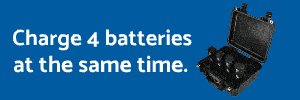A friend had a battery failure the other day, it was on a Phantom 3 and needless to say it came crashing down. Fortunately it just scared the heck out of a few cows, but it didn't do so well.
I asked him if he monitored his battery status, and I got this "how do you do that".
Lets face it, most flight failures are due to battery failure. If a battery is beginning to show inconsistent cell voltage then it is time to replace it, and especially if you are flying a one battery drone.
This is what I use for my battery survey. One thing I am sure of is DJI doesn't keep accurate number of charges because all the below batteries have always been charged together. Also my voltages will read a little different than DJI because I go two digits to the right of the decimal.
Paying close attention to your batteries may save a lot of grief, and it is just good preventive maintenance. If I see a full 10th of a volt difference on the cells, I want a knew battery.

I asked him if he monitored his battery status, and I got this "how do you do that".
Lets face it, most flight failures are due to battery failure. If a battery is beginning to show inconsistent cell voltage then it is time to replace it, and especially if you are flying a one battery drone.
This is what I use for my battery survey. One thing I am sure of is DJI doesn't keep accurate number of charges because all the below batteries have always been charged together. Also my voltages will read a little different than DJI because I go two digits to the right of the decimal.
Paying close attention to your batteries may save a lot of grief, and it is just good preventive maintenance. If I see a full 10th of a volt difference on the cells, I want a knew battery.








